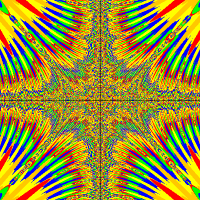Hello,
It seems I cannot get the idea behind of this method:
"getOneObjectAtOffset(int,int,CLASS.class)"
So I made a very simple example:
World's subclass:
Actor's subclasses:
Basically, the code will create 10x10 field of pixels where 1 pixel's size is equal to 10 pixels. Each of the field's pixels gets to get 1 object from A class.
The user is given an opportunity to press key "K" to make an attempt of finding one of the A classes' objects via specified in the code coordinates .
Why would it return me java.lang.NullPointerException ?
Correct me if I am wrong, but wasn't this method supposed to find one object at certain coordinates and return it?
I obviously miss something...
Thanks.
( Greenfoot API )
import greenfoot.*;
public class X extends World
{
A a;
Back back;
int T;
static int K = 0;
public X()
{
super(10, 10, 10);
T = 10;
for(int x = 0; x < T; x++){
for(int y = 0; y < T; y++){
a = new A();
addObject( a, x, y);
}
}
back = new Back();
addObject( back, 8,8);
}
}import greenfoot.*;
public class A extends Actor
{
int ID = 0;
public A(){
ID = ++((X) getWorld()).K;
}
public void getID(){
System.out.println("ID:"+ID);
}
}import greenfoot.*;
public class Back extends Actor
{
public void act()
{
if(Greenfoot.isKeyDown("K")){
((A) this.getOneObjectAtOffset(4,4,A.class)).getID();
}
}
}




